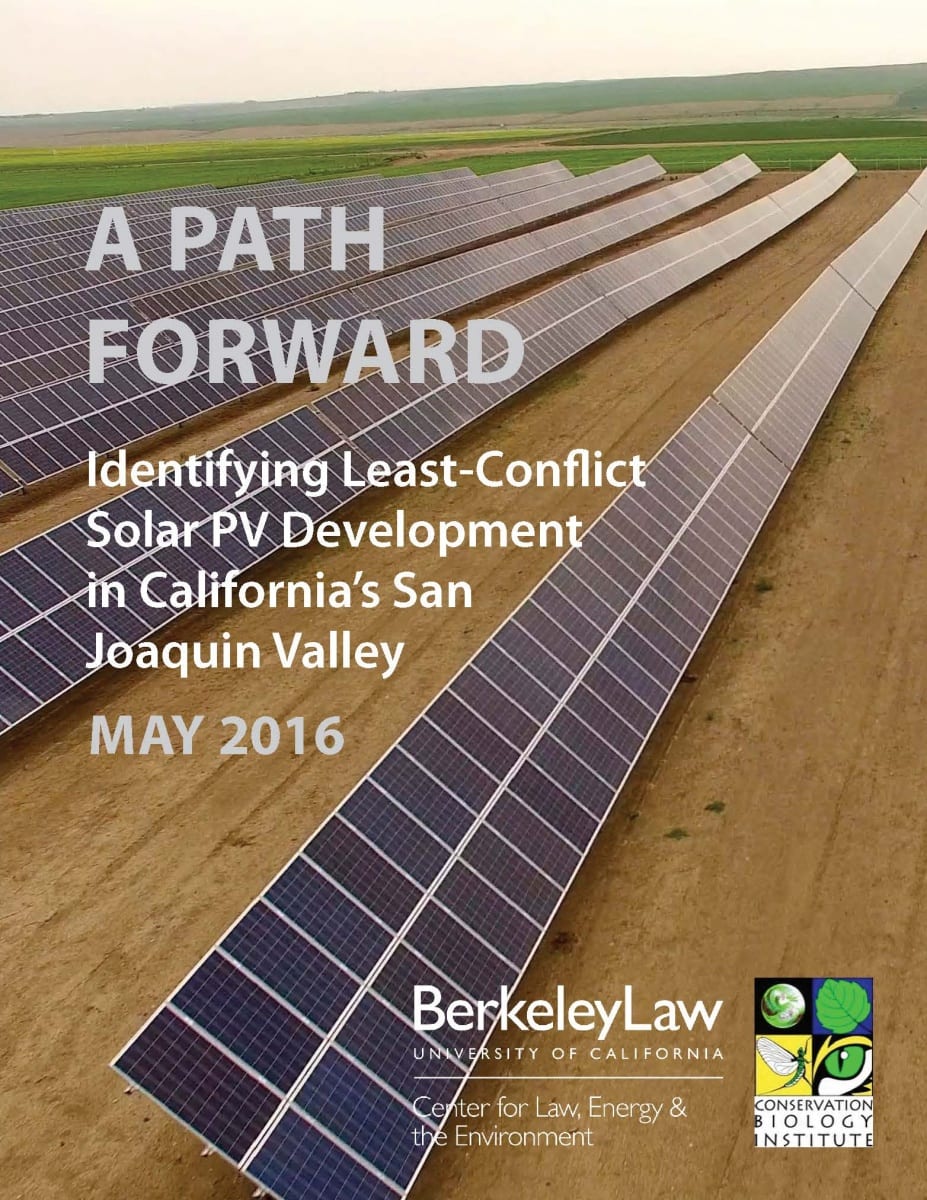May 2016
California’s push to achieve 50 percent of our electricity from renewable sources by 2030 will entail a significant deployment of large-scale solar photovoltaic (PV) installations. But in places like the San Joaquin Valley, proposed installations have engendered conflicts with agricultural and conservation groups, who fear a resulting loss of valuable lands and the species and farming and ranching that depend on them.
To address the challenge, Berkeley Law’s Center for Law, Energy and the Environment (CLEE) partnered with Conservation Biology Institute (CBI) and Terrell Watt Associates to develop a new process to find “least-conflict” lands in the eight-county San Joaquin Valley region. The project team convened leaders from the agricultural, conservation, and solar PV development communities, and included tribes and key agencies. We asked the groups one question: from your perspective, where are the least-conflict lands for solar PV development in the Valley?
Key findings:
To answer this question, the group worked with CBI’s cutting-edge but straightforward on-line mapping platform, called Data Basin Gateway (sjvp.databasin.org).
- Out of the 9.5 million acres in the stakeholder study area, the groups identified 470,000 acres of ideal, non-controversial land for solar PV development.
- The amount of land is roughly equal to 5 percent of the entire Valley study area.
- At a generic calculation of 1 megawatt of solar PV production from 5 acres of panels, the lands identified could provide 94,000 megawatts of renewable power – greater than all combined current in-state generation capacity and enough to power as many as 23 million homes in California — just from the San Joaquin Valley.
To be sure, not all of this land, on further inspection, may be practical or feasible for solar PV development. But if even a fraction works, it will accelerate the state’s renewable efforts and reduce the impact of air pollution on Valley communities.
Recommendations:
Based on the results, CLEE urges policy makers to encourage solar expansion on these optimal lands and streamline the planning processes to steer more solar PV development there. Such efforts could include:
- Siting and fast-tracking appropriate transmission capacity to these lands;
- Developing permitting incentives for projects proposed in these areas, such as reforms to the Williamson Act and advance mitigation procedures under the California Environmental Quality Act; and
- Further study on the potential compatibility of solar PV with agricultural practices.
CLEE also encourages policy makers to support similar mapping processes throughout the state and eventually for a multi-state effort across the western United States.
Download the Report:
See Our Op-Ed in Capitol Weekly:
Location, location: Solar PV and the San Joaquin Valley (May 16, 2016)
For More Information:
Contact Ethan Elkind, Director, Climate Program, Center for Law, Energy & the Environment at UC Berkeley Law.
This work was made possible by generous support from the Energy Foundation
